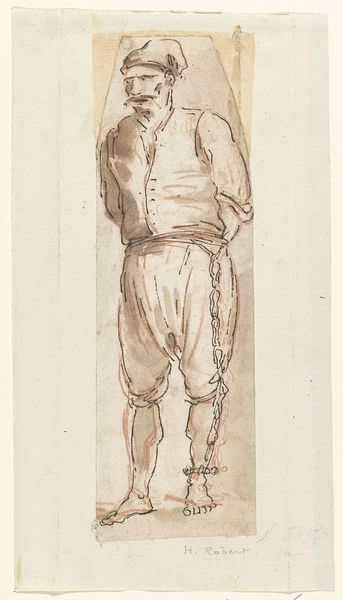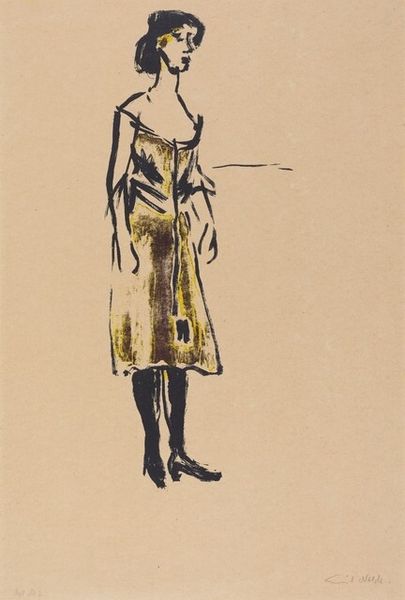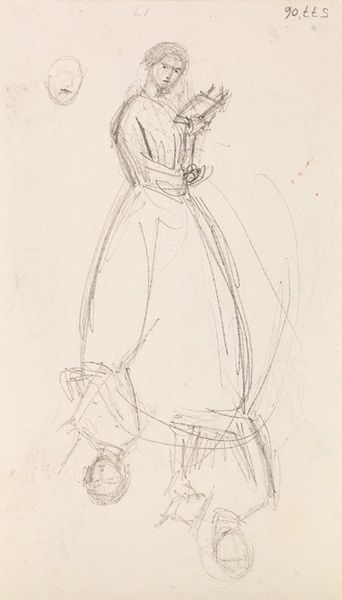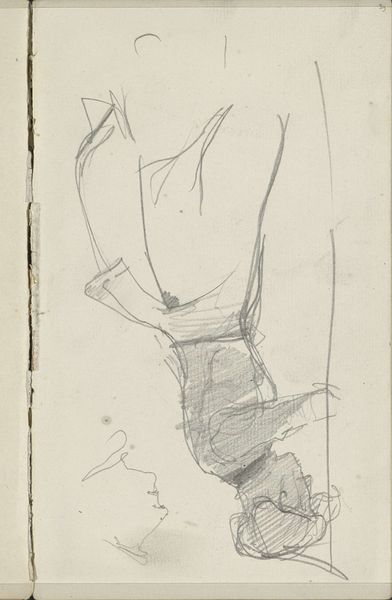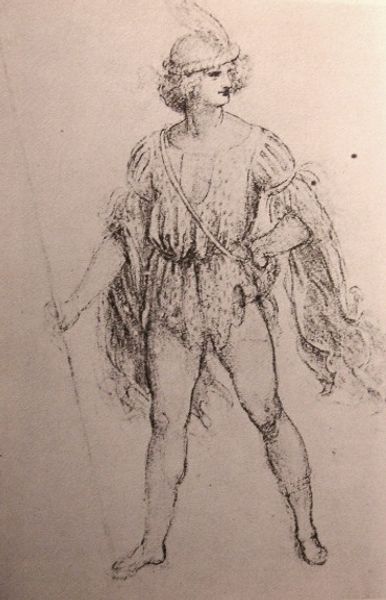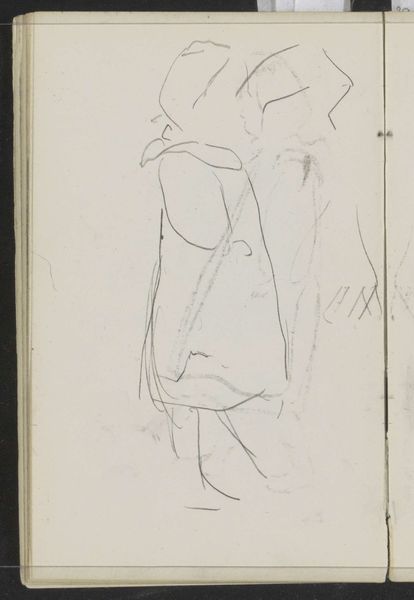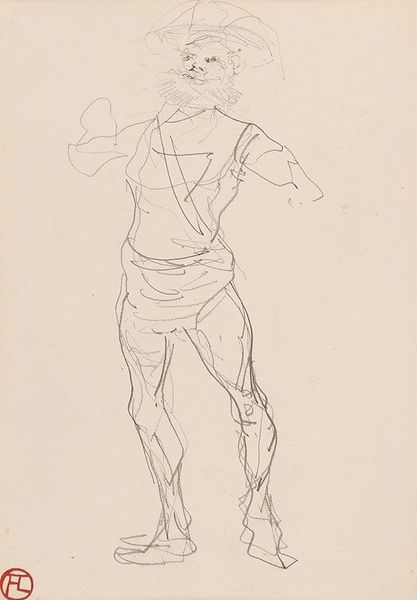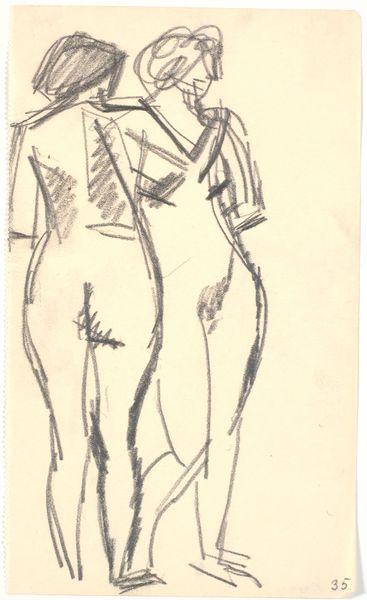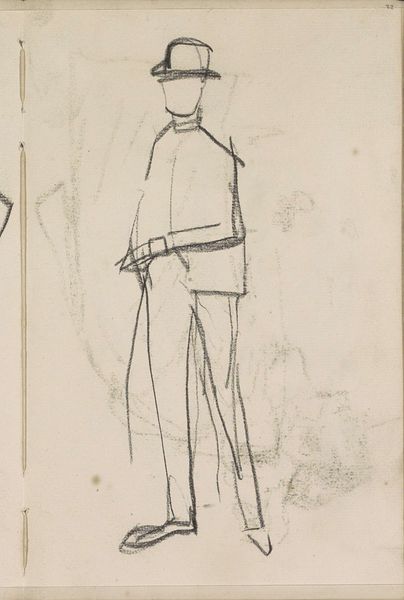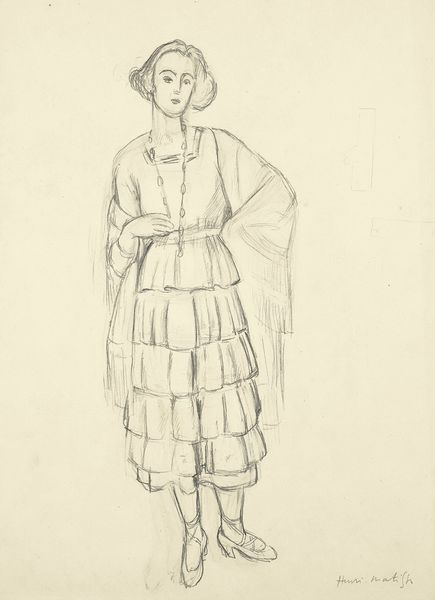
Glaiveman, costume sketch for Henry Irving’s Planned Production of King Richard II
0:00
0:00
drawing, watercolor
#
drawing
#
watercolor
#
character sketch
#
romanticism
Copyright: Public Domain: Artvee
Curator: Here we have Edwin Austin Abbey's "Glaiveman," a costume sketch intended for a production of Shakespeare's *King Richard II* starring Henry Irving. The rendering combines watercolor and drawing. What's your immediate reaction to it? Editor: It has this wonderfully contradictory feeling. There's a raw immediacy to the sketch style, the lines barely containing the forms, but the character's pose and expression reek of noble suffering. Curator: I agree, it does capture a sort of melancholic grandeur. Abbey’s focus was very often the recovery and maintenance of traditional aesthetics and historical visuality. Even just a 'glaiveman' can have this historical and psychological depth that would resonate with audiences. Editor: I see a man positioned precariously on the cusp between agency and complete domination. There’s something disturbingly prophetic about seeing a single figure who is ostensibly meant to serve a ruling power and yet is positioned in a kind of self-possessed nobility, gazing, perhaps, directly at his oppressors. He looks as if he’s seeing something none of the elite actors in this political drama can possibly see, including, perhaps, King Richard himself. Curator: The detail in the helmet and mail seems quite particular; I suspect the artist invested energy in understanding the weight and restriction such armor implies for the wearer. Editor: Yes, that really seems to bind the figure even as the suggestion of a bare-legged skirt gives him a weird sensuality, or at least a surprising vulnerability, depending on the perspective you take. What do you make of the color choices—the harsh brick red against the supple, caramel brown? Curator: The red might function as a signal of both status and impending conflict, like a flicker of warning embedded in the spectacle. The brown might refer back to this man’s closeness with the land—labor, loyalty, etcetera. I wonder how those colors might have been intensified in full stage lighting. Editor: I appreciate how the sketch avoids settling comfortably into celebratory mode, leaving unresolved tension as this "glaiveman" awaits marching orders. It holds this interesting perspective on masculinity, labor, power. Curator: Indeed—it highlights how such seemingly minor figures carry weighty, ambivalent roles within these large stories of power and downfall.
Comments
No comments
Be the first to comment and join the conversation on the ultimate creative platform.


